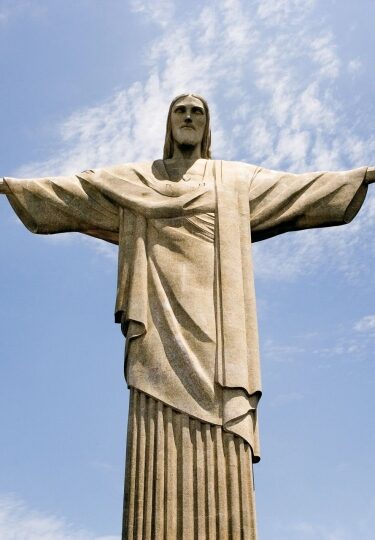The most famous landmarks in Brazil are both natural and manmade. You’ll find ancient volcanoes, jewel-like islands draped in dense rainforest, and vast stretches of white sand where you can wander for miles.
There are iconic manmade landmarks, too. You’ll want to get up close to the towering statue of Christ the Redeemer in Rio, but don’t miss the country’s futuristic museums, extraordinary cathedrals, and city parks.
Here are 14 famous landmarks in Brazil to discover.
Christ the Redeemer, Rio de Janeiro
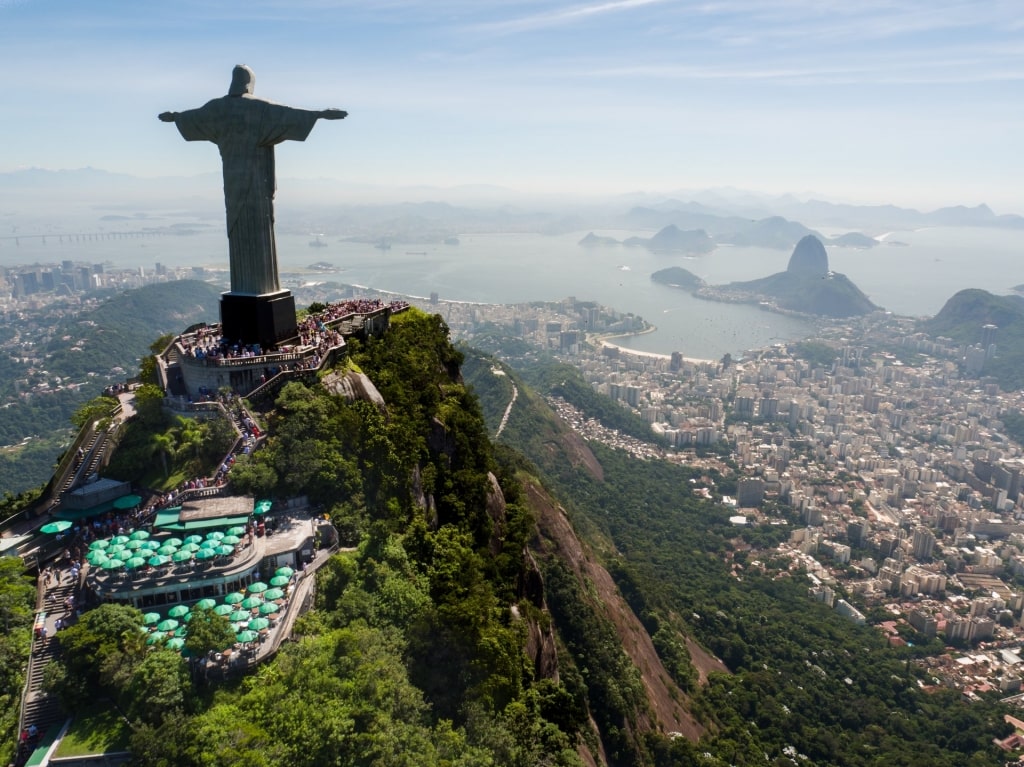
Christ the Redeemer, Rio de Janeiro
An icon of the city, Christ the Redeemer, or Cristo Redentor, stands serenely on top of Corcovado mountain, arms outstretched. The concrete-and-soapstone statue itself is 98 feet tall, or 124 feet if you count the pedestal, and was built between 1922 and 1931 by sculptors and engineers from Brazil, France and Romania. It’s become a symbol of Christianity worldwide.
Reach the top on the narrow gauge Trem do Corcovado rack railway that hauls you up through the lush forest of the Parque Nacional da Tijuca. The views are stupendous; the whole city spreads out below, curving around long, white sand beaches, boats bobbing on the aquamarine water, jungly hills stretching into the distance.
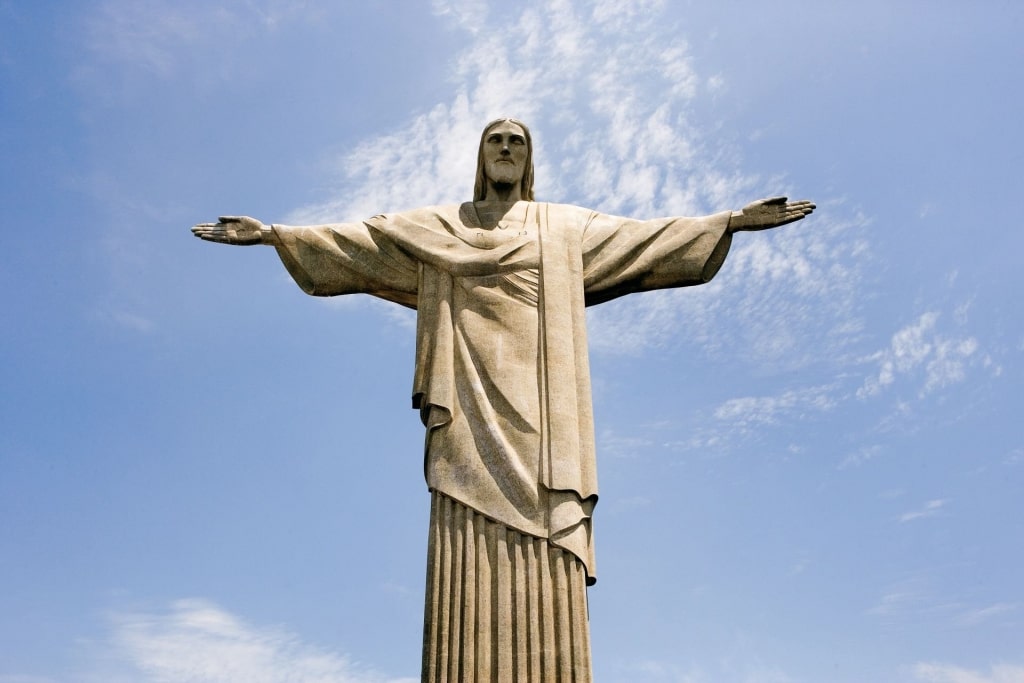
Christ the Redeemer, Rio de Janeiro
For a serious challenge, you could hike up if you’re fit and comfortable with heights and steep, narrow trails. The walk, which is clearly marked, starts at Parque Lage, near the botanical garden, and will take about 90 minutes through the shade of the rainforest. The way down will be quicker, of course.
Ipanema Beach, Rio de Janeiro
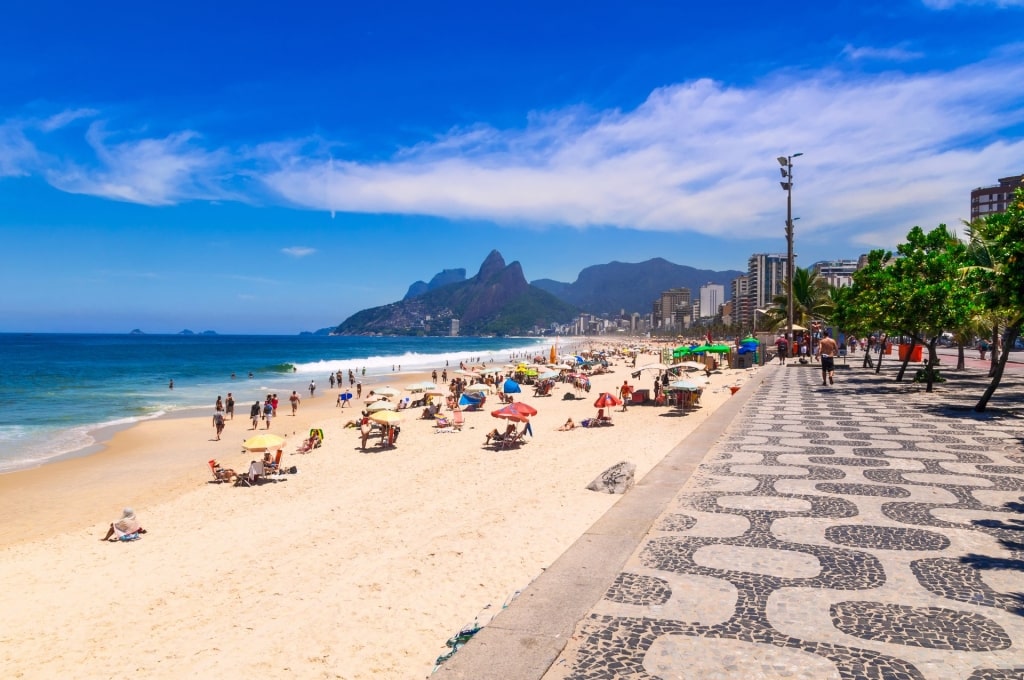
Ipanema Beach, Rio de Janeiro
Pounded by crashing rollers, the pointed peaks of Morro Dois Irmãos towering to one end, Ipanema is the prime spot to observe Rio in microcosm. You’ll see everything here, from families out at weekends to tanned, beautiful people unselfconsciously strutting their stuff, artists, same-sex couples, surfers, and beach volleyball players.
Ipanema fringes the wealthy neighborhood of the same name. It’s famed for Bossa Nova music, so you’re perfectly entitled to stroll along the sand, humming “The Girl From Ipanema” to yourself. Get here early on weekends to stake your claim in the sand—but only swim where the locals are swimming, as the undertow can be fierce.
Tijuca National Park, Rio de Janeiro
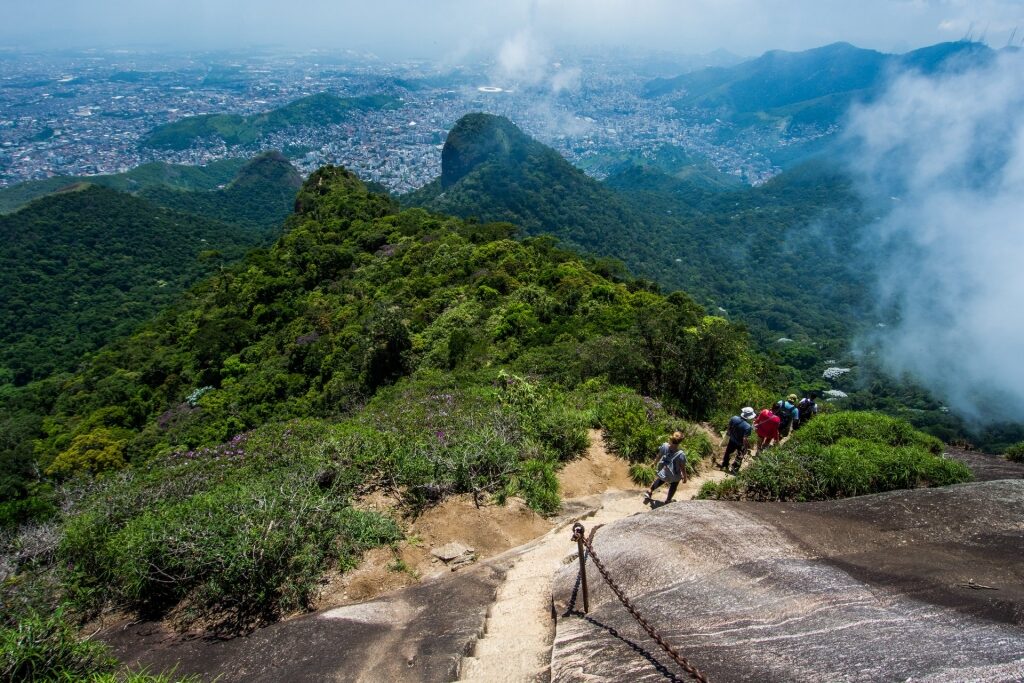
Tijuca National Park, Rio de Janeiro
The idea of a rainforest so close to a major city takes some getting used to, but Tijuca lies right next to the urban area on the slopes of Corcovado. It’s much-loved by Cariocas (as residents of Rio call themselves). You’ll find forests, mountains, caves, bubbling creeks, and tumbling waterfalls, under which you can cool off on a humid day.
Hiking trails criss-cross the 15-square-mile Atlantic rainforest, and you can choose the length and difficulty of your walk. You’ll see monkeys scampering in the trees and iguanas draped over the branches, and from higher up, panoramic views of the city.
Copacabana Beach, Rio de Janeiro
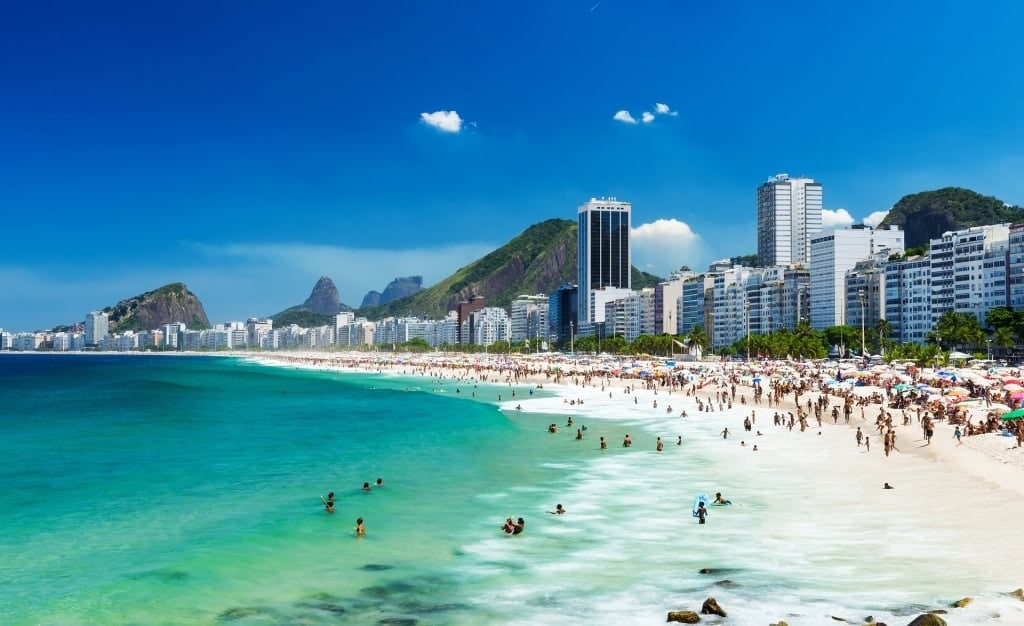
Copacabana Beach, Rio de Janeiro
Another long, golden sweep of sand, Copacabana rivals Ipanema for the crown as one of the most famous landmarks in Brazil. Watch locals playing beach football—you could be looking at a future star.
Join a game of beach volleyball, or try your hand at batball, a kind of beach tennis with no net. Stroll along the beachfront pavement, a wavy design in black and white marble and a landmark in itself, designed by Brazilian landscape architect Roberto Burle Marx. Buy an ice cream, or try a refreshing glass of cold coconut milk from one of the many beach vendors.
Museum of Tomorrow, Rio de Janeiro
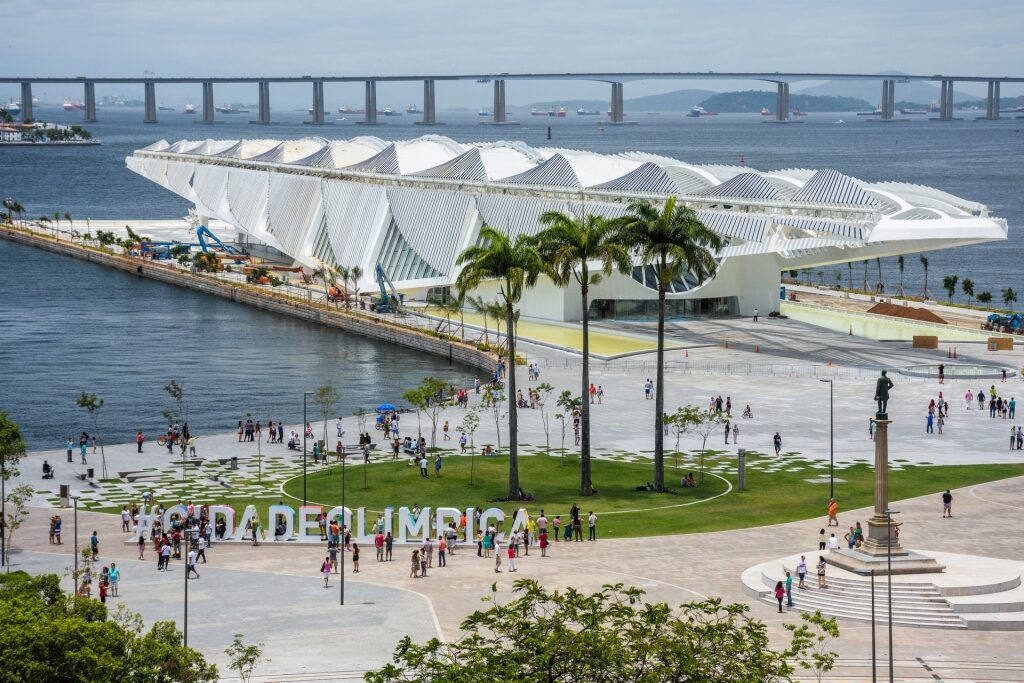
Museum of Tomorrow, Rio de Janeiro
As dazzling from the outside as the exhibits and ideas it contains, the Museu do Amanhã, or Museum of Tomorrow, is one of the world’s most ambitious structures. It’s located near the regenerated port and opened in December 2015, after the Olympic Games, since when it has become one of the major landmarks of Brazil.
The building is the work of superstar Spanish architect Santiago Calatrava, whose futuristic structures you may recognize from buildings in New York, Milwaukee, and Valencia, Spain.
The architect says his concept reflects the organic forms of the bromeliads that grow in Rio’s Botanical Gardens. Solar panels, which move to follow the sun, generate nine percent of the building’s power, while the roof is a giant, fan-like structure cantilevered over the water.
Inside, you’ll find thought-provoking exhibits and interactive displays about climate change, sustainability, and the future of the human race.
Metropolitan Cathedral of Rio de Janeiro
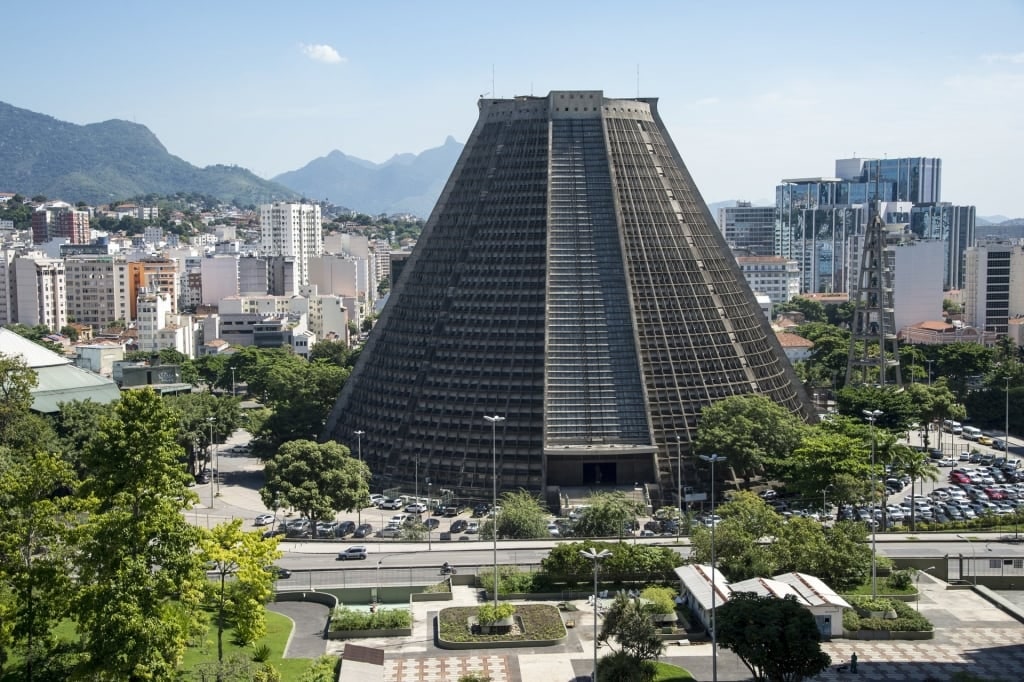
Metropolitan Cathedral of Rio de Janeiro
You could be forgiven for mistaking this futuristic cathedral, one of the most famous landmarks in Brazil, for a rocket ship. A vast, conical structure looming over the downtown area, the cathedral is far from typical; for a start, it isn’t crowned with a cross.
You have to venture inside for that, where you’ll see an enormous cross spanning the ceiling, transparent and backlit by the light streaming through the roof and the four panels of stained glass that stretch from the points of the cross to the bottom of the building.
The shape of the building was loosely inspired by the Mayan pyramids of the Yucatan peninsula in Mexico, square at the bottom (although the cathedral is round), sloping up to a plateau at the top.
It was designed by Brazilian architect Edgar de Oliveira da Fonseca and built between 1977 and 1984, and dedicated to St. Sebastian, the patron saint of the city. If you can time your visit to coincide with a service, you’ll be all the more impressed; the building can accommodate 20,000 people standing.
Sugarloaf Mountain, Rio de Janeiro
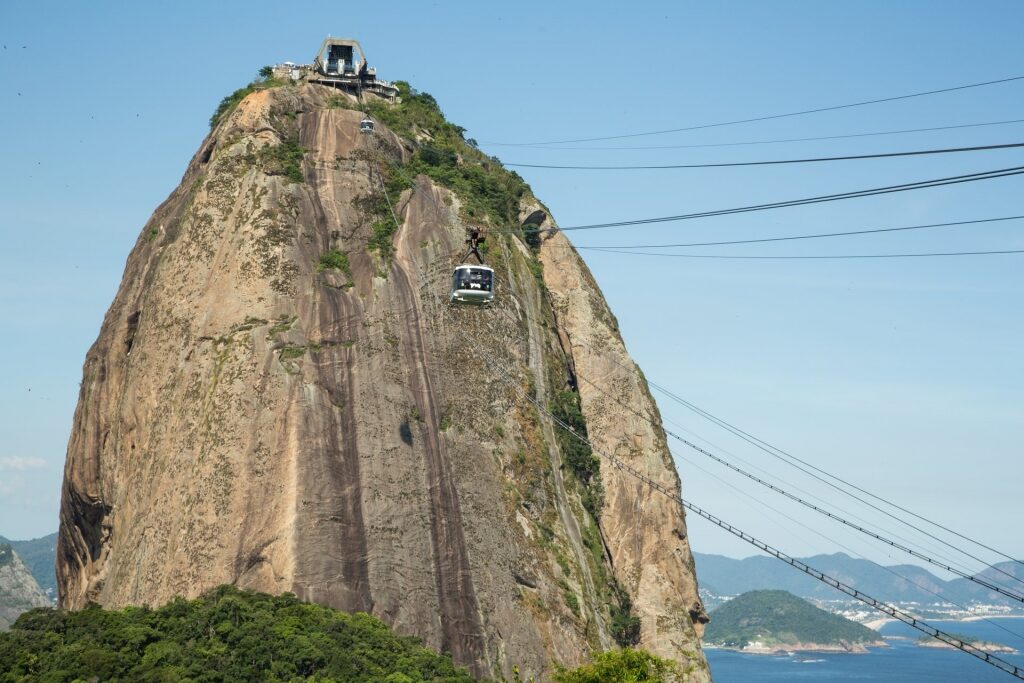
Sugarloaf Mountain, Rio de Janeiro
You’ve admired the view of Sugarloaf Mountain from Corcovado—but now, you’ll want to put the city in context with a view of Christ the Redeemer, on Corcovado, from afar. This is just one of the many reasons to brave the dizzying cable car ride up Pao de Acucar, or Sugarloaf Mountain—one of the most beautiful mountains in the world.
The views from the top are better than anything you’ve seen in a picture. The whole city stretches out below you, hemmed in by mountains and distant rainforest and fringed by those famous beaches. If you can, go at sunset when the landscape is infused with a golden light.
Escadaria Selarón, Rio de Janeiro
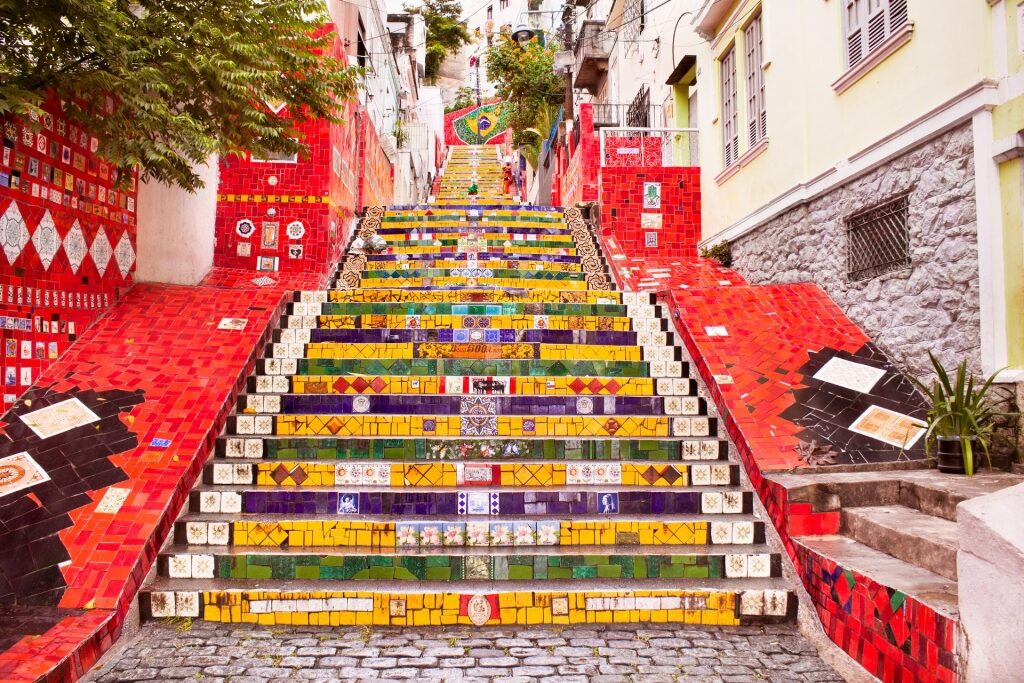
Escadaria Selarón, Rio de Janeiro
One of the city’s best-loved landmarks, this colorful flight of 215 stairs is the work of the late Chilean ceramic artist Jorge Selarón. The stairs run up from Joaquim Silva street, linking the Santa Teresa and Lapa districts and are decorated in brilliant fragments of green, yellow and blue tiles, the colors of the Brazilian flag.
When Selarón started the project in 1990, he often had to take on other jobs to pay for more tiles and fragments of mirror. As word spread about his work on the steps, tiles would arrive from all over the world, sent by fans keen to support the project.
The walls either side of the staircase are lined with red tiles, in honor of the Chilean flag. The entire work of art, Selarón said, was a dedication to the people of Brazil.
Museu de Arte de São Paulo
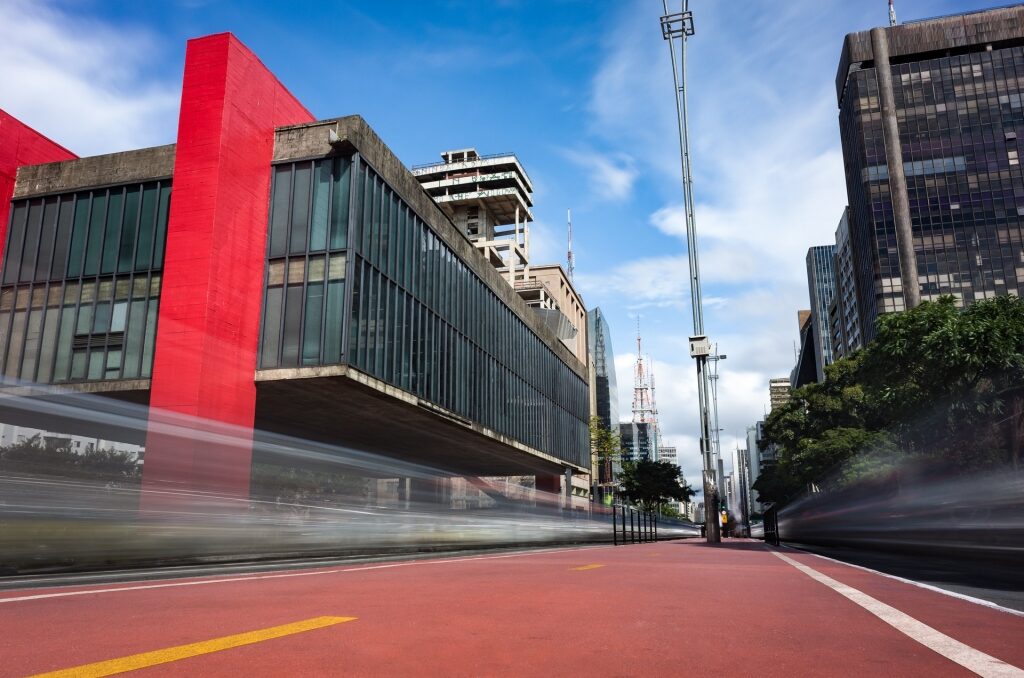
Museu de Arte de São Paulo
You could spend a day in this world-class museum on Avenida Paulista and still not see everything. Best known for its modern European and Italian Renaissance collections, São Paulo’s principal art museum, MASP, is regarded as housing the finest collection in South America.
You’ll wander, open-mouthed, through modern galleries displaying masterpieces by Goya, Manet, Picasso, Rembrandt and El Greco, as well as priceless works by Brazilian artists.
The building itself, built in 1968, is a talking point, resembling a giant shipping container propped up by four enormous scarlet pillars, suspended some 25 feet above the ground. Locals either see it as a modern classic or shudder when it’s mentioned. Whatever your view, this is without doubt one of the major landmarks of Brazil.
Ibirapuera Park, São Paulo
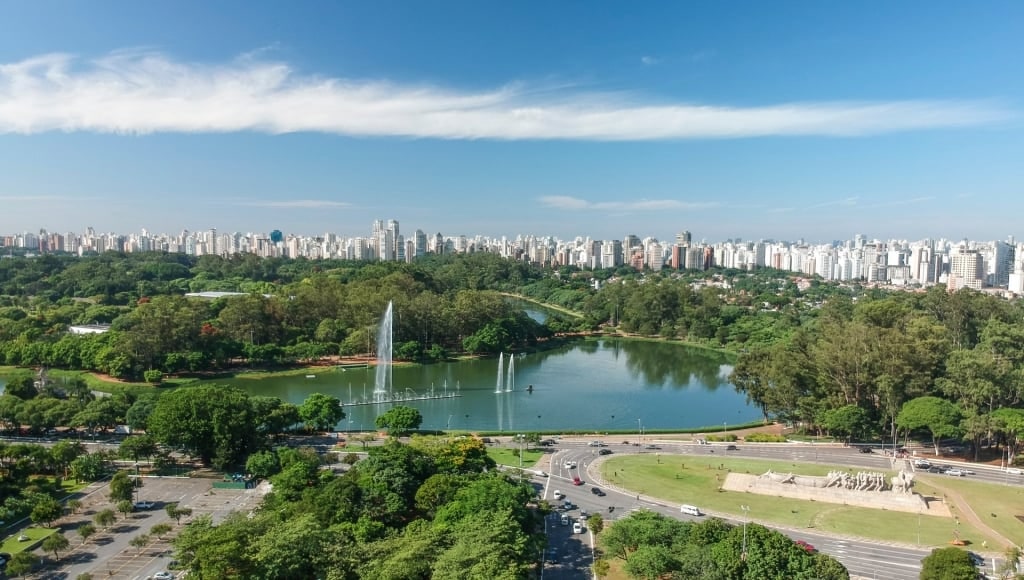
Ibirapuera Park, São Paulo
The green lung of São Paulo, 391-acre Ibirapuera Park is where locals let off steam, cycling, jogging, rollerblading, dog-walking and picnicking. You’ll find lakes, fountains, walking and jogging paths, and shady woodland for cooling off after a busy day of sightseeing or exploring the museums that surround the space. Buy a beer or a fresh coconut juice from one of the many kiosks, sit back, and watch the world go by.
But Ibirapuera Park is more than a recreation spot; it’s an icon of the city. São Paulo’s Fashion Week is held here, as are art and architecture biennials. There’s an auditorium hosting big-name music events, too.
São Paulo Cathedral
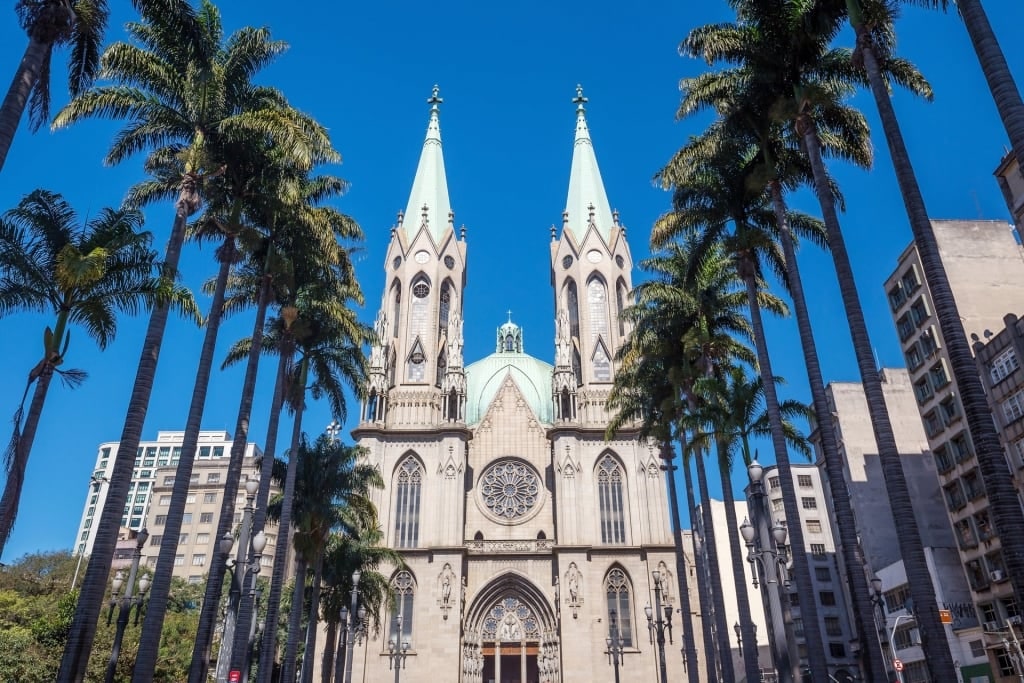
São Paulo Cathedral
Unlike Rio’s ultra-modern cathedral, the most famous place of worship in São Paulo is a graceful Gothic structure, a landmark of the city among all the high-rises and an institution since its original construction in the 16th century. It accommodates 8,000 worshippers and is one of the largest Gothic cathedrals in the world.
Inside, you’ll find pools of shimmering color as light filters through exquisite stained glass windows. In the crypt below, numerous bishops and archbishops of the city are buried.
Beco do Batman, São Paulo
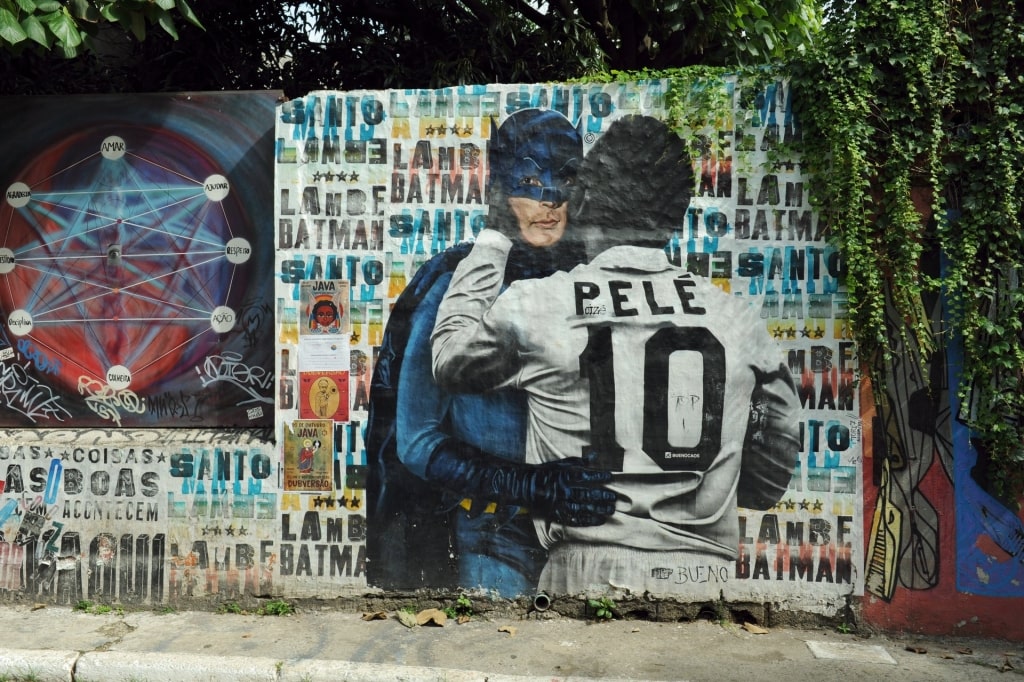
Beco do Batman, São Paulo Photo by Maxwell Fung on Flickr, licensed under CC BY 2.0
São Paulo’s answer to the Wynwood neighborhood in Miami, or Valparaiso in Chile, Beco do Batman, or Batman’s Alley, is tucked away in the cool, arty Vila Madalena district. Here, street artists are encouraged to produce their finest work.
This being street art, nothing is permanent, but a visit here will have you awe-struck by the scale and skill of the work and the vibrant colors. The photo opportunities, needless to say, are superb.
Octávio Frias de Oliveira Bridge, São Paulo
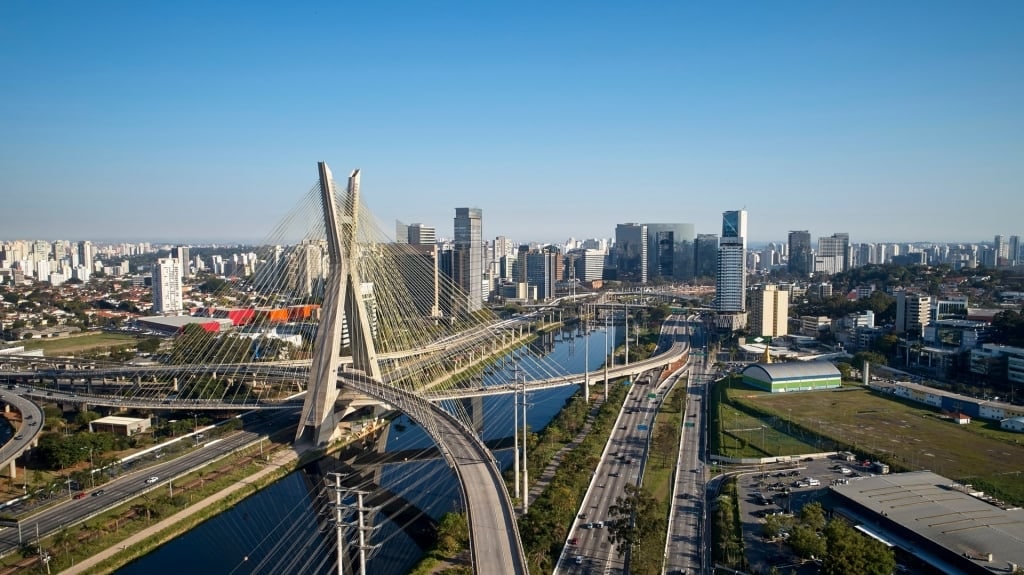
Octávio Frias de Oliveira Bridge, São Paulo
An important landmark of São Paulo, this graceful, 453-foot-tall cable-stayed bridge links Marginal Pinheiros with Avenue Roberto Marino, spanning the Pinheiros River. Designed around an unusual cross formation, the bridge is the longest curved suspension bridge in the world.
It’s also the world’s only bridge on which two curved tracks are supported by a single concrete mast. If you’re here at night, or at Christmas, you’ll often see it lit up in an array of dazzling colors.
Altino Arantes Building, São Paulo
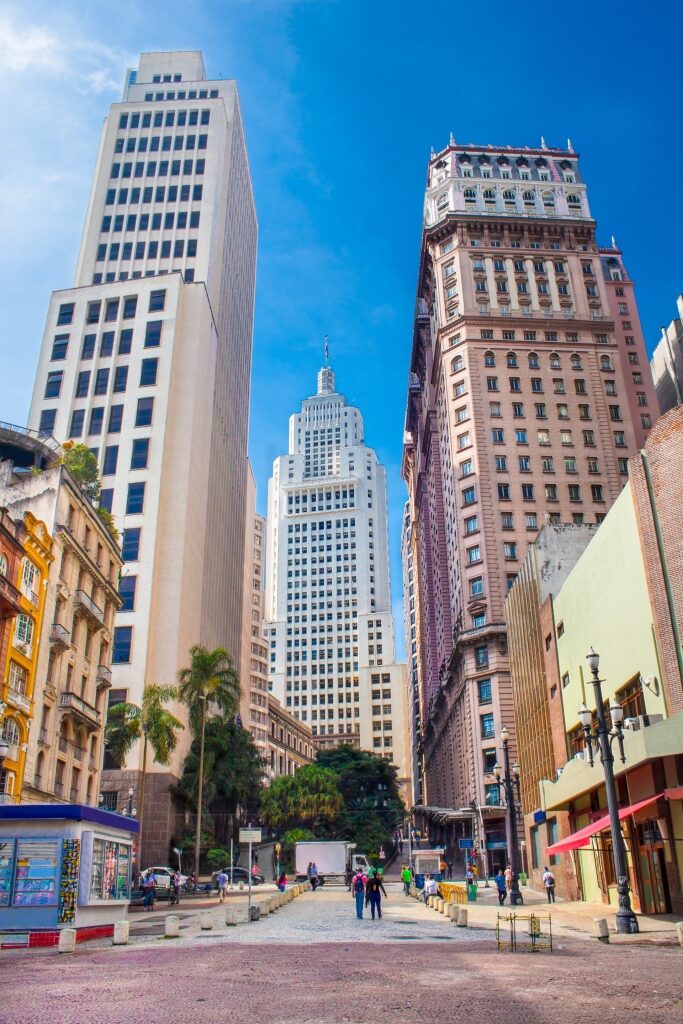
Altino Arantes Building, São Paulo
Brazil’s answer to the Empire State Building, this 36-story Art Deco skyscraper was built in 1937 as the headquarters of the Bank of the State of São Paulo, or Banespa. It was designed by architect Plínio Botelho do Amaral, who did indeed use the New York landmark as his inspiration.
At 529 feet tall, this is the third-tallest building in the city today. Locals still know the tower as the Banespa building, although it’s now owned by Banco Santander.
There’s an observation deck on the 34th floor from where you can see the vast metropolis of São Paulo stretching away in every direction; a trip up here is a great way to get some perspective on this enormous city. Take time to visit the museum on the third floor, too, which tells you about the history of the building and its construction.
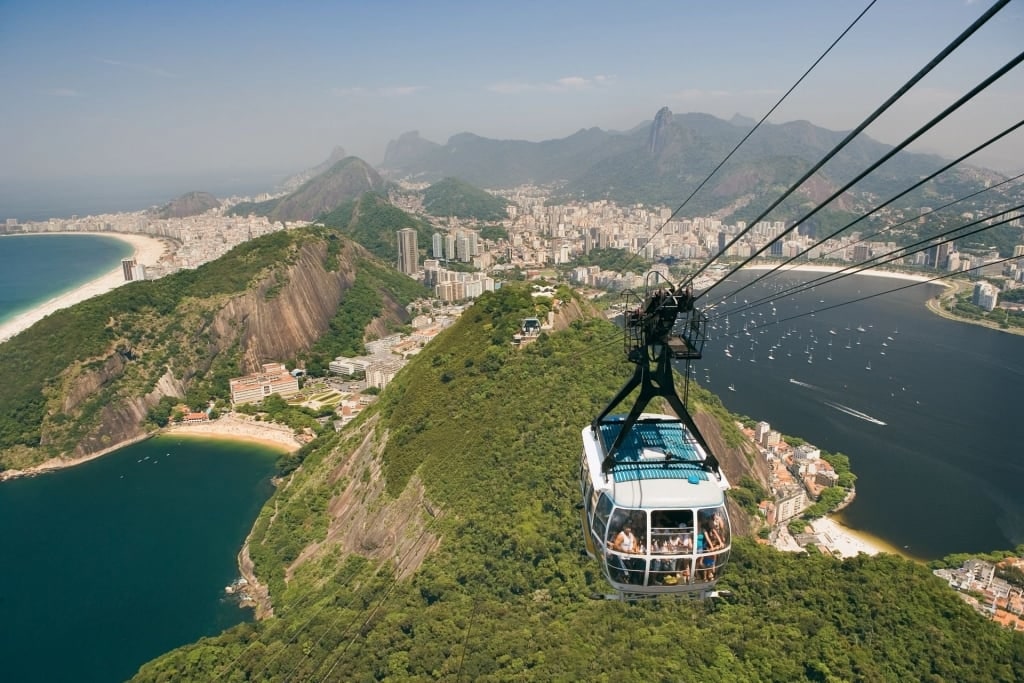
Rio de Janeiro
Inspired to discover some of Brazil’s extraordinary landmarks for yourself? Browse our cruises to Brazil and start planning your dream vacation.
